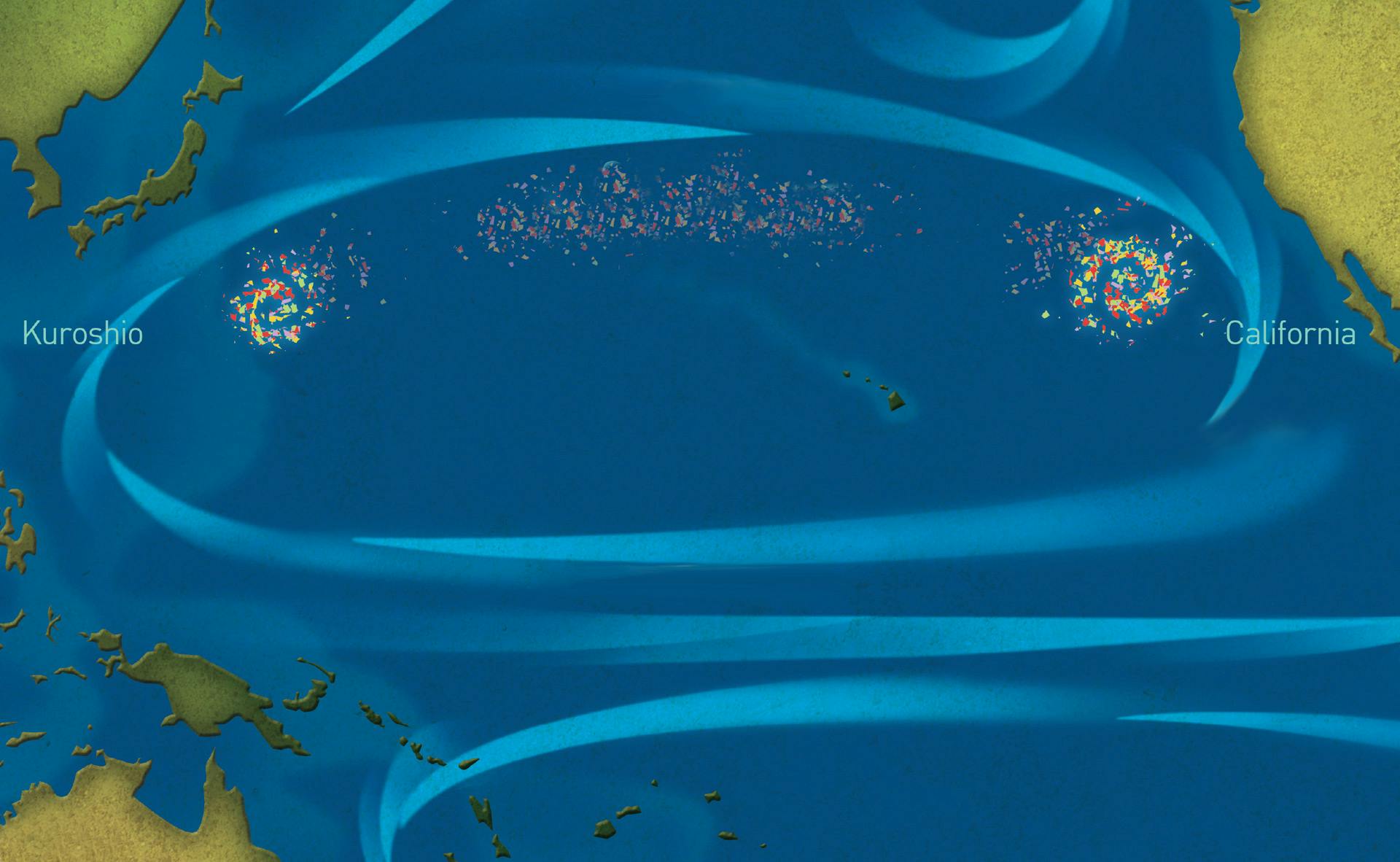Located between California and Hawaii, the Great Pacific Garbage Patch (GPGP) centers on a circular ocean current, or gyre, polluted with a massive amount of plastic waste over a shifting area of a size almost impossible to accurately survey. Researchers have estimated that the Patch holds 1.8 trillion individual pieces of waste. Given that staggering number, how can we wrap our heads around a cleanup plan? How much would it cost to make an impact?
Currently, the cheapest way to conduct research or extract plastics from the GPGP is by boat. Shipping vessels attach surface nets to their stern and drag them along the designated area. A nonprofit called Project Kaisei utilizes this approach to haul plastic debris to facilities that transform it into reusable oil. Also, in 2015, a “Mega Expedition” was launched by The Ocean Cleanup foundation that consisted of 30 vessels pulling 652 surface nets across the GPGP. But only 1.2 million pieces of debris were captured.
More recently, Ocean Cleanup has introduced an operation called the Ocean Cleanup Array. Floating barriers are placed within concentrated zones of plastic debris, and using ocean currents, waste is captured for removal every 45 days. Estimates contend this approach will be 33 times cheaper than traditional methods of manually scooping up waste with nets. Over a 10-year period, these barriers could extract a projected 42 percent of the debris within the GPGP at a total cost of $390 million.
Ocean Cleanup has faced scrutiny over some of its research. Deep Sea News—a peer-reviewed scientific forum—concluded that areas of the operation are unclear. “The feasibility study still has major technical issues that must be addressed before such a large-scale project is truly functional,” wrote Kim Martini, physical oceanographer at the Joint Institute for the Study of the Atmosphere and Ocean at the University of Washington in Seattle.
Despite these challenges, Ocean Cleanup has pledged to be fully transparent with its findings, and new research is being done throughout the stages of implementation. A host of other organizations, researchers, and governments are looking at the problem as well.











